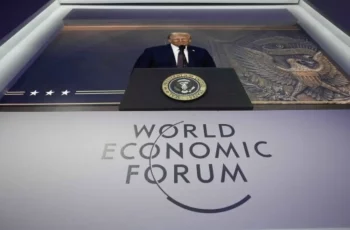Days of unrest have gripped downtown Los Angeles as protests against aggressive immigration raids escalated into riots, vandalism, and clashes with law enforcement. What began as peaceful demonstrations over U.S. Immigration and Customs Enforcement (ICE) sweeps has spiraled into a high-stakes standoff between California authorities and the Trump administration. With National Guard troops deployed, a curfew in effect, and hundreds arrested, the City of Angels finds itself at the center of a national debate over immigration, law enforcement, and the limits of federal power.

The turmoil was triggered by a series of surprise ICE raids across Los Angeles in early June. On June, 7, federal agents executed search warrants at multiple locations – including warehouses and even parking lots – in an effort to round up undocumented immigrants. More than 40 people were arrested on immigration charges in a single day, according to Homeland Security officials, and a prominent California labor leader was detained for allegedly impeding agents during a raid. Los Angeles Mayor Karen Bass denounced the sweep as an effort meant to «sow terror» in the nation’s second-largest city.

Governor Gavin Newsom blasted both the raids and the federal response to protests, accusing the Trump administration of «sowing chaos so they can have an excuse to escalate». He deployed California Highway Patrol officers to Los Angeles highways solely to keep peace, not to assist in immigration enforcement.

Protesters in Los Angeles hold signs reading «Stop the Deportations!» as they rally against the ICE raids. The demonstrations reflect widespread fury in the city’s large immigrant community over the crackdown, which advocates say has «terrorized» families. Local officials support the right to protest but have urged an end to the vandalism and violence caused by a small subset of agitators.

What began as peaceful protest quickly escalated over the course of four days. Large crowds of immigrants’ rights activists and community members flooded downtown streets, chanting «Set them free!» outside the federal Metropolitan Detention Center where detainees were held. Tensions spiked when protesters attempted to block ICE vehicles from leaving a raid site leading agents in riot gear to deploy flash-bang grenades and pepper spray to disperse the crowd. One union organizer, documenting a raid at a Home Depot store, was injured and arrested, inflaming the protesters further. By Friday evening, police in riot gear declared an unlawful assembly as about 200 protesters rallied outside the downtown federal jail, demanding release of those detained.

After cleaning up broken glass and graffiti from his ransacked shop, Raz Tatanian, a jewelry store owner, vented frustration at those exploiting the chaos. «These are the actions of opportunistic hoodlums who don’t care about the immigrants,» he said. «Yes, protest against ICE, but don’t do it by stealing from people’s livelihoods.»
His sentiments were echoed widely. «Tagging historic landmarks, launching fireworks at officers and terrorizing residents is not protest – it’s destruction,» noted Assembly member Mark González, who represents downtown L.A., adding that such behavior «plays right into Trump’s hands and undermines the very movement you claim to support.» Many store owners emphasized they support the demonstrators’ cause, recounting that Los Angeles «was built by immigrants and it thrives because of immigrants», but they are heartbroken to see the community’s own neighborhoods harmed in the melee.
The Los Angeles riots of 2025 have become far more than a local disturbance – they are a flashpoint in a broader clash over immigration policy and executive power in America. President Trump is essentially making good on his campaign vow to use every tool, even the military, to enforce immigration laws, a stance cheered by his supporters as restoring law and order. But that very stance has galvanized fierce resistance in diverse, progressive cities like L.A., where officials see it as an attack on their communities and values.

The standoff raises urgent questions: Will a federal clampdown on «sanctuary» jurisdictions actually bolster public safety, or will it erode public trust and spur further unrest? Can local and federal authorities find any common ground, or will California’s defiance lead to protracted legal and political battles?
For now, a tense calm hangs over Los Angeles. Armored vehicles guard government buildings downtown, while broken shop windows are boarded up and scrawled graffiti is painted over. The streets that saw crowds of thousands have been largely cleared under curfew, and faith leaders implore demonstrators to remain peaceful. Yet the underlying grievances remain far from resolved. Governor Newsom cautions that «it will not end here,» suggesting similar showdowns may loom in other states if the Trump administration continues what he calls its war on democratic norms.
Los Angeles, a city of immigrants, finds itself a battleground in that war – one that has left it shaken but unbowed. As officials weigh the next steps, the country watches closely, aware that the fallout from L.A.’s unrest could ripple nationwide, testing the resilience of America’s democratic institutions and the nation’s commitment to its motto: «e pluribus unum» – out of many, one.










Comments